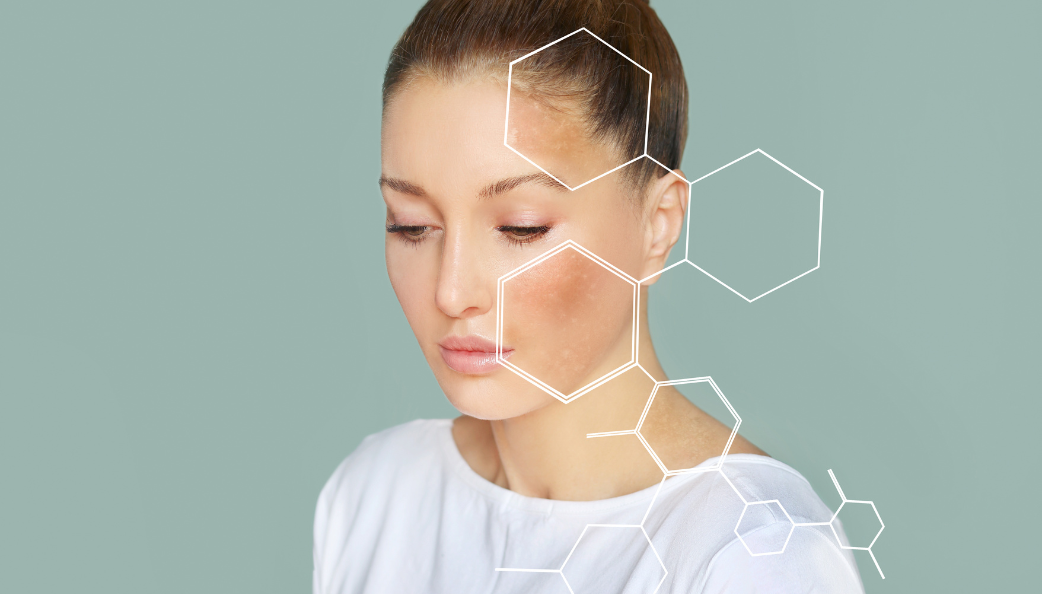
Jul 18 , 2023
Sun Damage: Hyperpigmentation
1. What is hyperpigmentation?
Hyperpigmentation is a very common and frequent condition that can have a considerable impact on the socioprofessional life of individuals, particularly among women. Consequently, there has been a high demand for improvements, leading to an increase in dermatological procedures such as laser treatments and peeling in recent years (Guerrero, 2012). Hyperpigmentation can result in certain areas of the skin appearing darker than others, manifesting as small patches that range in color from brown, black, grey, red, to pink, and can also cover large areas of the body. It can affect any skin type and any part of the body at any age.
Although hyperpigmentation is usually not harmful and does not indicate a serious medical condition, there is no guarantee that pigmentation will fade completely even with medical treatment.
2. Types of hyperpigmentation
There are several types of hyperpigmentation, including sunspots, melasma, and post-inflammatory hyperpigmentation.
- Sunspots, also known as solar lentigines, are common and occur when individuals are exposed to excessive sun exposure over time. They typically appear on areas of the skin that are frequently exposed to the sun, such as the chest, face, hands, and more.
- Melasma is a chronic pigmentation disorder characterized by the formation of darker spots on sun-exposed areas of the skin. Frequent exposure to UV radiation can trigger melasma, and women, especially pregnant women, are at a higher risk of developing it. Certain medications can also contribute to the development of melasma.
- Post-inflammatory hyperpigmentation occurs as a result of injury or inflammation on the skin. One common cause of post-inflammatory hyperpigmentation is acne.
3. Why exposing ourselves to UV will cause hyperpigmentation?
One common cause of hyperpigmentation, resulting in sunspot and melasma is excessive melanin production. Melanin is a pigment that gives skin its color and is responsible for absorbing harmful UV rays, thereby protecting our skin cells from sun damage. When the skin is exposed to an excess of UV radiation, it stimulates the production of melanin.
Melanin is produced by specialized skin cells called melanocytes. Any alterations in melanin production can lead to pigment disorders such as hyperpigmentation.
4. How to prevent/ treat hyperpigmentation
- It is not possible to completely prevent hyperpigmentation as the sun is present everywhere. However, there are preventive measures that can be taken to protect our skin:
- Always apply a broad-spectrum sunscreen that provides comprehensive protection for your skin. Consider using Heliocare Advanced Gel, a lightweight sunscreen suitable for all skin types. It offers broad-spectrum protection against harmful UVA and UVB rays.
- Avoid sun exposure during the peak hours when the sun's rays are strongest, typically between 10 am and 2 pm.
- Reapply sunscreen every 2 hours since topical sunscreen may lose effectiveness due to sweating or friction with fabric.
Sometimes, there's a high possibility for us to forget to reapply sunscreen, be lazy to reapply, or apply an insufficient amount.
There is this recommended option available called Heliocare Oral. It is the World's 1st Oral Sunblock that protects your skin from harmful UV rays. Heliocare products are developed by Cantabria Labs, a pharmaceutical company in Spain specializing in dermatological skincare products. The main ingredient in all Heliocare topical and oral sunblocks is Fernblock, a patented technology developed by Cantabria Labs in collaboration with Harvard Medical School over a period of 12 years.
The benefits of using Heliocare Oral sunblock include:
- Antioxidant properties to combat free radicals.
- Protection and repair of skin DNA.
- Immunoprotection to boost the skin's immune response.
- Anti-aging effects.
- Inhibition of melanin production to prevent hyperpigmentation.
5. Summary
Hyperpigmentation is a skin condition that can occur for various reasons, and sun exposure without adequate sun protection is one of the factors. excessive melanin production, and post-inflammatory reactions and many more. The types of hyperpigmentation include sunspots, melasma, and post-inflammatory spots like acne spots.
Although hyperpigmentation is generally harmless to health, many individuals choose to have it treated through dermatological procedures due to its impact on appearance. There are preventive measures available to minimize the occurrence of hyperpigmentation, including using broad-spectrum sunscreen every day, wearing protective clothing like sleeves to shield the skin from the sun, avoiding excessive sun exposure, and regularly reapplying sunscreen.

